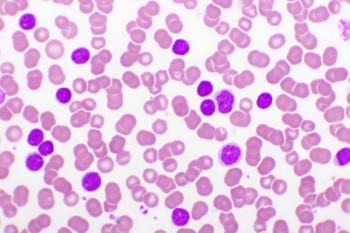
Integrating Pharmacists Into ACOs
As healthcare moves to value-based arrangements and delivery models like accountable care organizations (ACOs), the benefit of incorporating a pharmacist can be overlooked. Tina Joseph, PharmD, BCACP, and Reena Jones, PharmD, CPh, both from Nova Southeastern University, outlined how pharmacists can be integrated into ACOs in order to improve care and patient satisfaction, while reducing cost.
As healthcare moves to value-based arrangements and delivery models like accountable care organizations (ACOs), the benefit of incorporating a pharmacist can be overlooked. Tina Joseph, PharmD, BCACP, and Reena Jones PharmD, CPh, both from Nova Southeastern University, outlined how pharmacists can be integrated into ACOs in order to improve care and patient satisfaction, while reducing cost.
During their session at the AMCP Managed Care & Specialty Pharmacy Annual Meeting 2016, Dr Joseph set the stage by highlighting the need for new delivery models like ACOs.
There was a perfect storm that led to the push for value-based care. From 1999-2000 to 2009-2010, the percentage of adults between the ages of 45 and 64 who had 2 or more chronic conditions rose from 16.1% to 21%, while the percentage for those aged 65 and older rose from 37.2% to 45.3%.
At the same time, national health expenditures per capita doubled from 2000 to 2009. Clearly the money being spent wasn’t creating better results. Enter: the Affordable Care Act, ACOs, and the triple aim.
So where does pharmacy fit in for an ACO?
“Typically the conversations that occur with the accountable care organizations have to do with physicians and the hospitals, however, medication management is one of the untapped aspects of this entire process that has not been acknowledged” Dr Joseph said.
Pharmacists can play a key role as drug experts who can counsel patients and advise physicians on the best medication to prescribe.
As such an untapped area, there hasn’t been much research on pharmacists in ACOs, but Dr Joseph went through the results from 2 major studies.
The first study was a retrospective chart review of 23 pharmacists working in 30 locations and found 2780 medication-related problems and that patients with diabetes cared for by the pharmacists had a high higher rate of being optimally managed. In addition, total health cost per person was lower by more than $1500.
The second study reviewed 300 patient records and found pharmacists recommendations during the annual wellness visit for an ACO had a high acceptance rate and generated additional revenue for the ACO. During the time period being reviewed, 49% of vaccinations offered were administered, there were 1608 interventions (about 5.4 per patient), and 24 dosage changes.
Dr Jones then ran through a number of scenarios and disease states where pharmacists can be beneficial to an ACO, and pointed out that not all services pharmacists can offer are medication related.
She started by discussing transitions of care with a case study of a 63-year-old man who for the last 3 days has had a productive cough with yellow/green phlegm, temperature of 102.3 degrees Fahrenheit, lethargy, and a respiration rate of 11 breaths per minute. In addition, he has a history of type 2 diabetes, hypertension, and hyperlipidemia. After being treated in the hospital, he is sent home with a set of instructions, such as providing his physician with his lab report, getting new prescriptions filled, and new dietary restrictions. Unfortunately, the patient is unlikely to remember all of the new instructions.
“They can’t recall all this,” Dr Jones said. “All the patient wants to do right now … is go home. However, is this information pertinent to the care of this patient? It is. So now this is how the pharmacists begin to introduce themselves into transitions of care with the accountable care organization.”
Pharmacists can most obviously help ACOs by getting vaccination rates up and improving adherence to medication through education efforts. But in addition to helping with medication, pharmacists can also improve the rate of patients who have filled out a depression questionnaire and even help with performing eye exams for patients with diabetes. Patients with diabetes need to have an eye exam every year, and the pharmacist can now perform this exam with the use of a new device.
“This is how you integrate into an ACO,” she said. “You think about you as a pharmacist practicing at the top of your license, how can it can benefit that provider.”
Newsletter
Stay ahead of policy, cost, and value—subscribe to AJMC for expert insights at the intersection of clinical care and health economics.









































